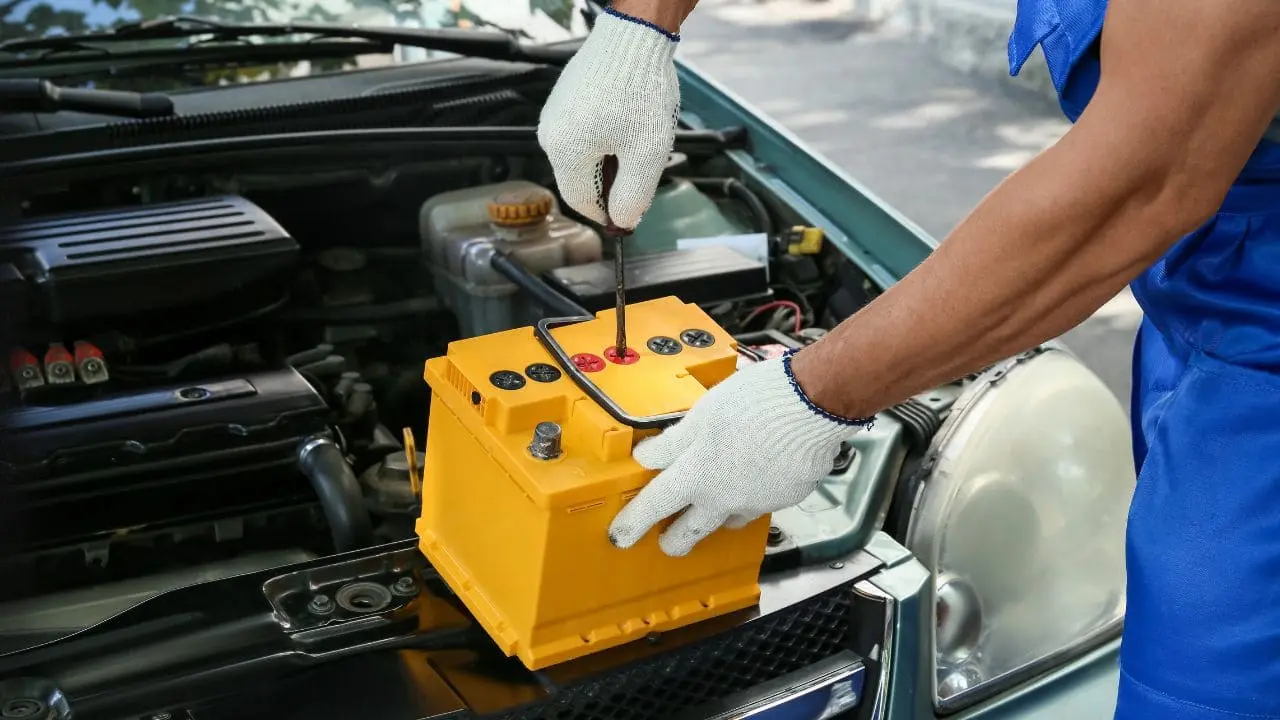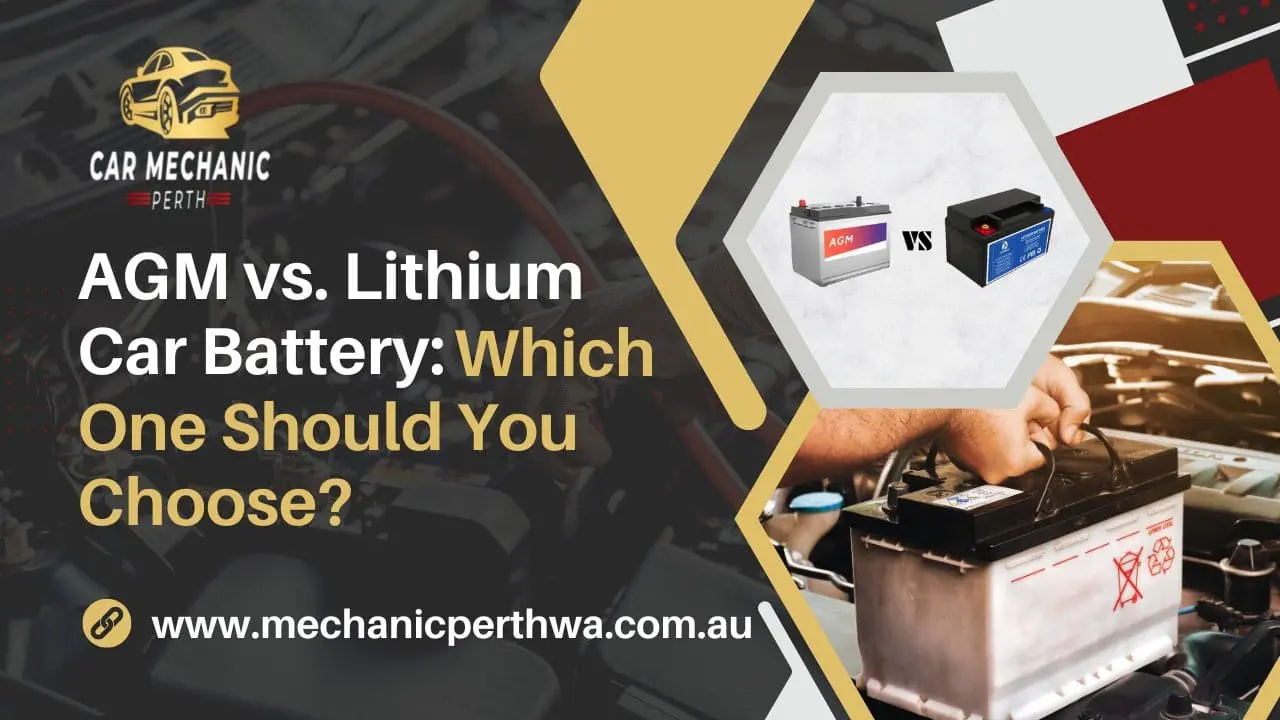The automobile market has a massive need of the battery to start the vehicle and power electrical parts. Stability is the most important factor to make these devices effective in Australia’s climate and long-distance driving conditions. Whether to use an AGM or a lithium car battery, you must compare their price, performance and maintenance.
This blog provides an extensive comparison of a lithium battery or an AGM battery. It enumerates the variations between the two kinds of batteries and helps select the correct one.
What is an AGM Battery?
It is a high-tech lead-acid battery. AGM is used as a short form of Absorbent Glass Mat. This battery has sulfuric acid as an electrolyte. This electrolyte is not deposited in the form of a free-flowing liquid. This procedure renders an AGM battery spill-proof and maintenance-free, suitable for a cars provides long-lasting results.
This type of battery has several advantages compared to traditional batteries. AGM battery has a lower probability of sulfating and retains the charge. These batteries have a greater range of orientations in mounting since the liquid or electrolyte is enclosed in these batteries.
AGM battery is chosen for electric vehicles that require storing during the off-season. In simple words, AGM battery is applied in many fields involving a stable and maintenance-free power supply, like marine use, renewable energy storage, backup power supply and other similar cases.
Also Read: 12 Best Car Battery Brands In Australia You Must Know
What is a Lithium Battery?

One of the rechargeable batteries is a lithium battery. If you have no idea what a rechargeable battery is, it can be charged and discharged repeatedly to utilize the storage energy. Mobile phones, laptops, and cameras have rechargeable batteries.
Lithium is used as an active material in lithium batteries. Lithium batteries have features such as being rechargeable hundreds of times, low self-discharge rate, and a large energy density, making them suitable for many applications, including emergency backup power, renewable energy storage, smartphones, portable power banks, tablets and alarm systems in remote locations.
The increased energy density and lightness make lithium batteries more valuable in the credibility and precondition their suitability for use in electric automobiles and handheld electronic devices. The best mechanics in Perth prefer it for modern vehicles due to its efficiency.
Comparison between Lithium and AGM Battery
To comprehend why one performs better, we will assess important parameters.
1. Design and Chemistry of Batteries
The basic difference between AGM and lithium batteries is their chemical makeup and internal composition.
AGM batteries are a form of lead-acid battery, with the electrolyte being impregnated with fiberglass mats between lead plates. Such a design reduces leakage and enables the battery to achieve increased bursts of power as compared to conventional flooded batteries.
Lithium car batteries, on the other hand, have lithium iron phosphate (LiFePO4) or other lithium-based compounds in the active material. Their design enables ions to travel easily among electrodes and is more energy-dense, lighter and has a shorter charge time.
2. Lifespan and Durability
A significant factor that contributes to a significant number of car owners is the battery life.
AGM battery normally has a life span of 3 to 5 years in accordance with use and weather. They are long-lasting but wear out easily due to deep discharges or high temperatures.
The Lithium batteries have a service life of 10 years or more. They have many charge cycles complete without moderating capacity. Besides, lithium batteries do not change their voltage over their lifespan because their performance is predictable.
3. Charging Efficiency
Lithium batteries are best at charging speed and efficiency.
AGM batteries take longer to charge and have a small current-carrying capacity. Overheating or shortening of their life may also result from overcharging them. They are not the best for high-frequency short journeys as the alternator may not restore the battery to full charge, so they are better loaded gradually and steadily.
The lithium batteries can charge up to four times more than AGM batteries. They can tolerate large amounts of charge current and attain full capacity quickly. The car battery service enhances efficiency, making them useful in modern cars with advanced electronics such as regenerative braking systems.
4. Power Output and Energy Density
Lithium batteries have a higher energy density, i.e., a greater energy storage capacity than their size. This enables them to provide a constant voltage even when the battery is discharged. Lithium batteries can operate demanding electrical systems more effectively without voltage drops.
AGM batteries, though, can provide high bursts of power for a low duration can become subject to voltage drops under heavy loads. This renders them suitable for vehicles with moderate energy requirements or as starter batteries in conventional vehicles.
Also Read: Top Electric Cars in Australia That Won’t Break the Bank
5. Maintenance and Safety

AGM batteries are considered maintenance-free compared to the traditional lead-acid types. But proper ventilation during charging and installation is required because they may release gases. Also, not equipped with internal monitoring, users should ensure not to overcharge them.
In this aspect, lithium batteries are more intelligent and safer. The car mechanic in Perth will check voltage, temperature and current flowing to assure maximum performance and safety. Also, lithium batteries are sealed, spill-free and vibration-resistant, so they are general due to their greater safety and cleanliness.
6. Temperature Tolerance
Neither batteries work well in extreme temperatures.
AGM batteries are more effective when used in cold weather than NiMH batteries. Their chemical reactions are also rather stable at low temperatures, so best option for harsh winters.
Nevertheless, the lithium batteries might fail to perform well in very low temperatures due to the lowered conductivity of the electrolyte. To overcome this problem, some contemporary lithium batteries have built-in heaters, although this may be expensive. Also, lithium batteries are resistant to heat and do not tend to degrade when subjected to heat.
7. Cost and Value for Money
Many car owners are grouped based on cost. The AGM batteries are cheaper in the short run since they usually cost between 150 and 300 dollars, depending on size and brand. This makes them an easy target for ordinary cars or those needing a good alternative without straining the budget.
Although costing considerably more, typically between 500 and 1000 dollars, lithium batteries save money in the long run. This may make them more economical in the long run, in terms of both cost and maintenance, including vehicles that have high energy demands or are used regularly.
Conclusion
The strengths of both AGM and Lithium batteries are similar. AGM batteries are proven and reliable to perform well in traditional automobiles and in cold weather. Lithium batteries, conversely, are the future, slim, long-term term and very efficient.
The final decision of picking one over the other will depend on your priorities. AGM batteries are still good among drivers who are conscious of their budget. However, lithium batteries are certainly the wiser option of the latest times in automobile history for high-performance, energy-saving and cost-effective performance. If you consult a car battery replacement in Perth, always get the right advice.
